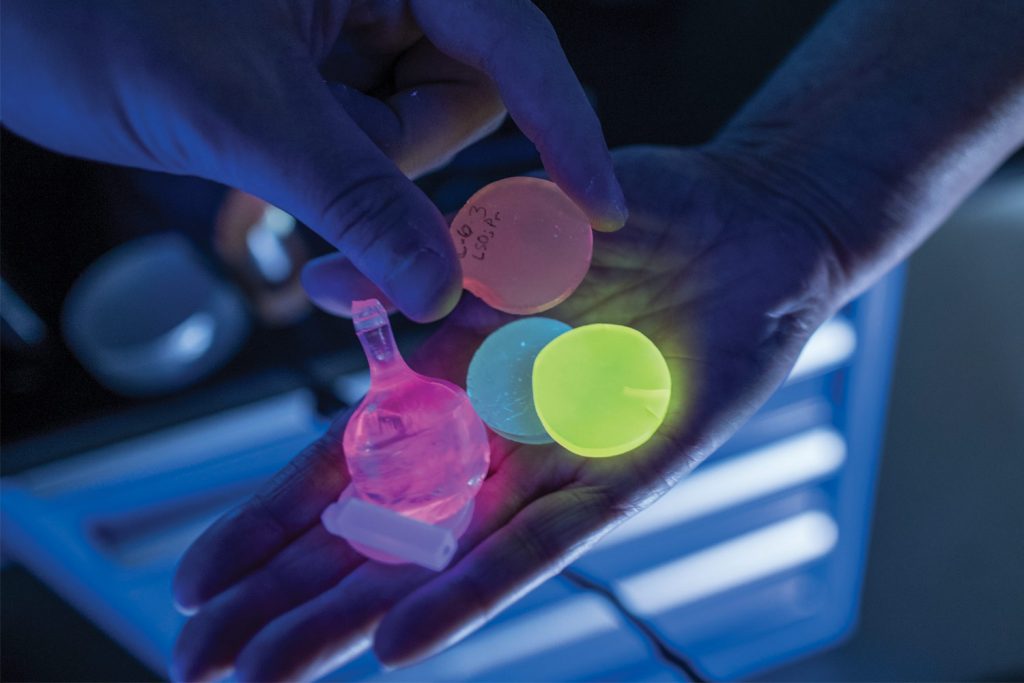What Are Scintillation Materials?
Scintillators are materials that absorb energetic radiation such as gamma rays, X-rays, or neutrons and convert that energy into short bursts of visible photons. These photons are then converted into electrical pulses by photo-detectors. Scintillation materials exist in many physical forms, including crystals, glasses, powders, ceramics, plastics, liquids, and gases. The SMRC concentrates primarily on inorganic single crystals, polycrystalline ceramics, and thin films.
Inorganic crystals typically have superior performance for the detection of high-energy gamma rays, while polycrystalline ceramics can offer lower cost alternatives in some cases. Thin films are being developed for high resolution radiography as well as for combinatorial materials discovery.
